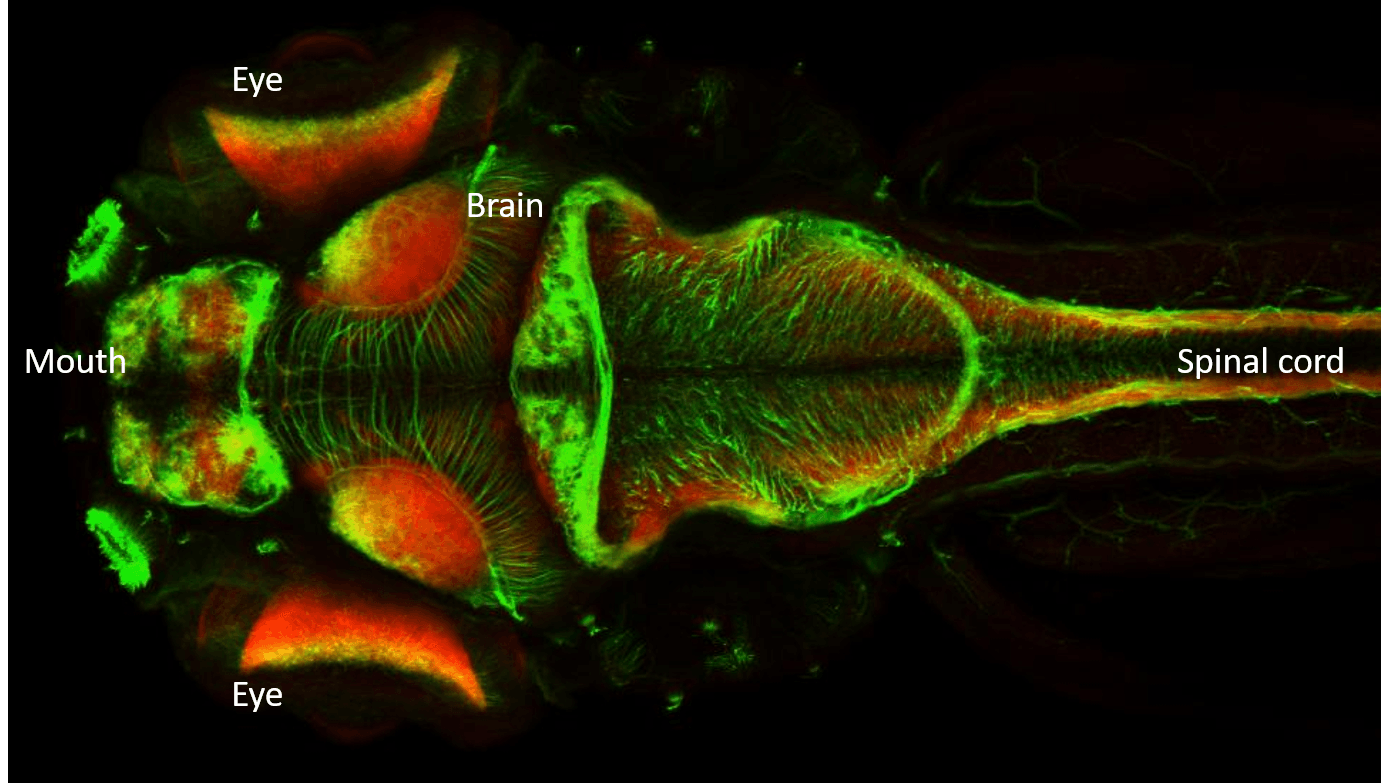Behavioral studies
It is some labs´ goal to understand the fundamental principles underlying the function of brain circuits in health and disease. In order to achieve this aim, they use genetically tractable small vertebrate, zebrafish. They monitor, dissect and perturb these tiny brains, through a combination of functional imaging, optogenetics, electrophysiological recordings, molecular genetics and quantitative behavioural assays.
The primary goal is to understand how the sensory world is represented in the brain and how these computations regulate different behavioural states (e.g. fear, arousal, feeding). Moreover, we are interested in understanding how these representations are modulated by behavioural states of animals (e.g, stress and hunger) or the process of learning. Scientist achieve this by focusing on those brain areas that integrate information from multiple sensory modalities and closely relate to behaviour. The small and accessible brain of zebrafish provides an exceptional framework for studying the neural circuit computations both locally and across multiple brain regions simultaneously.
It is possible to mark certain neurons in the brain with different colours (How this can be done --> see for example Biosensors) Some neurons produce a defined set of proteins, programmed by their genes. The genetic material of a neuron can be influenced in a way that certain proteins are produced together with fluorescent dyes that can be made visible under a microscope. This is how neurons can be distinguished from each other via a fluorescent dye.
Scientists are currently focusing on understanding how internal states of brain networks can generate ongoing spontaneous neural activity and how this ongoing brain activity can influence the representations of sensory information in the brain. Findings suggest that a small evolutionary conserved brain region, habenula, sits in the middle of this complex network, acting very much like a hub. It was shown that habenula operates like a switchboard and can use ongoing brain activity to gate and relay information from multiple brain regions to downstream brainstem nuclei/gene programs that regulate animal behaviour.


